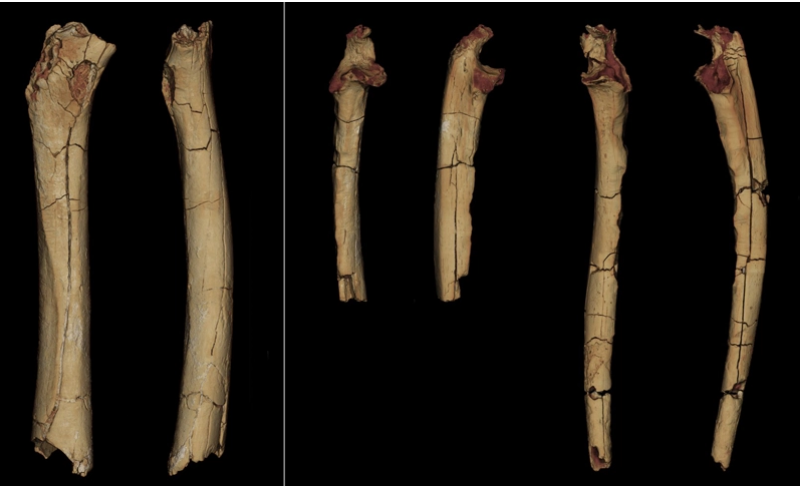
A recent study has determined that ancient human ancestors were bipedal around seven million years ago. This is a critical event in the development of our species and one that scientists are keen to date precisely.
This is based on a thorough examination of fossilized bones from the forearm (ulna) and thigh (femur) of Sahelanthropus tchadensis, the earliest representative species of humans. The Toros-Menalla region of Chad is where these fossils were initially found in 2001.
In addition, it’s possible that these early hominins engaged in some tree climbing utilizing all four limbs as would be expected if the species gradually evolved from four to two legs.
The researchers in their published papers write, “Here we present postcranial evidence of the locomotor behavior of S. tchadensis, with new insights into bipedalism at the early stage of hominin evolutionary history.”
Researchers were able to determine the mechanics of how these bones were utilized and how this creature walked by comparing the fossilized thigh and forearm bones with the corresponding bones from humans, chimps, and gorillas (its “locomotor mode”).
How Ancient Human Ancestor’s Walking Style Was Determined
S. tchadensis’s walking style was determined by a total of twenty features of the fossilized bones, including the bones’ external shape and internal architecture, which were determined using microtomography imaging.
The most plausible scenario, they said, involved “habitual bipedality” with some tree climbing. The research team contends that the manner the animals scaled trees differed from modern gorillas and chimpanzees, who leaned back on their finger and toe bones instead of using strong handholds.
“The curvature and cross-sectional geometric properties of the ulna…are indicative of habitual arboreal behaviors, including climbing and/or ‘cautious climbing,’ rather than terrestrial quadrupedalism,” the researchers wrote.
The work expands on previous research on a skull fossil presumed to also be from S. tchadensis, which was discovered at the same location. Now that there is more complete evidence, it is possible that these ape-like creatures were bipedal as the skull analysis had suggested.
The fossils are from a pivotal period, which has already sparked a lot of scholarly controversies, when humans genetically diverged from chimpanzees and bonobos, our closest living cousins, between six and eight million years ago.
These early hominins likely lived in a setting with a mix of grasslands, palm groves, and forests, and they would have had the option of climbing trees or walking on two legs to get food and water.
The researchers said that “the most parsimonious hypothesis remains that the postcranial morphology of Sahelanthropus is indicative of bipedality and that any other hypothesis would have less explanatory power for the set of features presented by the material from Chad.”
See all the latest news from Greece and the world at Greekreporter.com. Contact our newsroom to report an update or send your story, photos and videos. Follow GR on Google News and subscribe here to our daily email!



